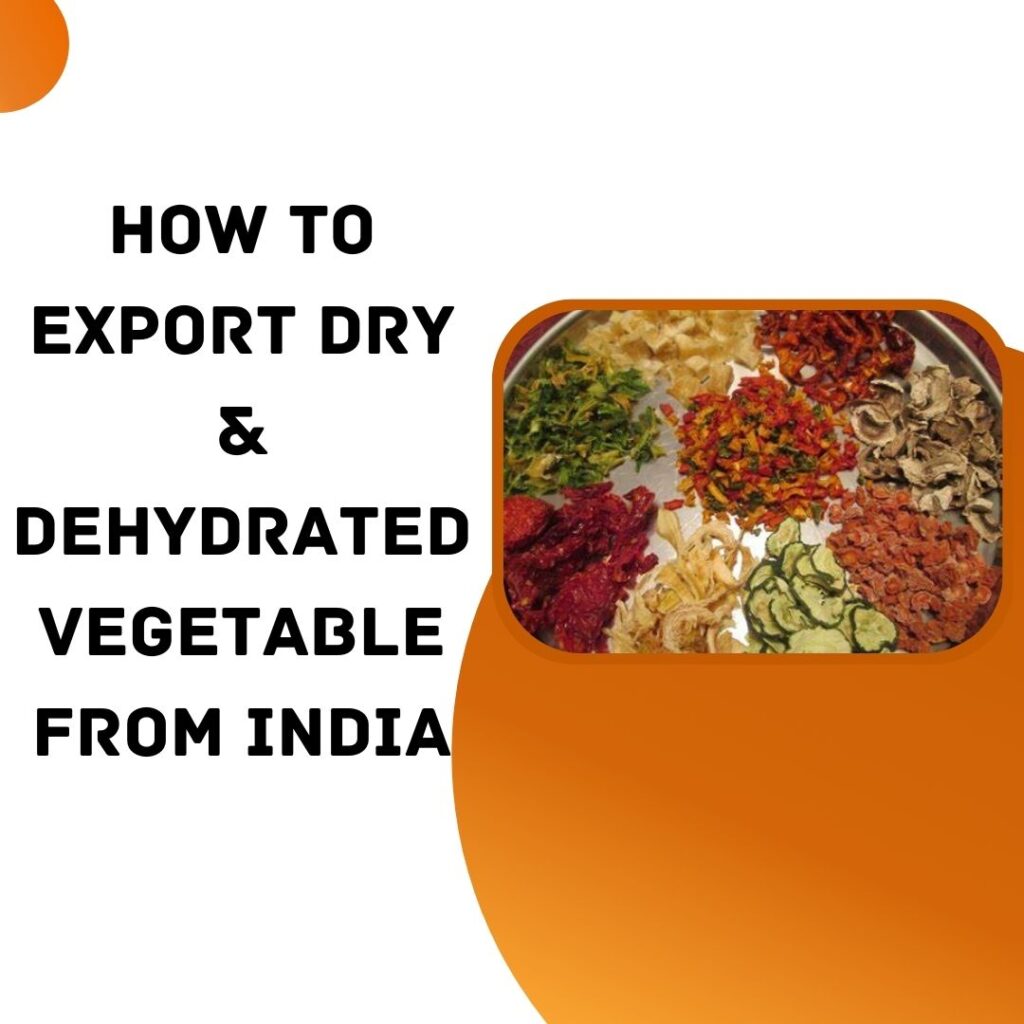Market Research:
Conduct thorough market research to identify potential markets and demand for dry and dehydrated vegetables. Understand the preferences and regulations of the target countries.
Legal Requirements:
Obtain an Importer Exporter Code (IEC) from the Directorate General of Foreign Trade (DGFT) in India.
Familiarize yourself with the regulations and requirements of the destination country. This includes phytosanitary regulations, labeling requirements, and any specific standards.
Quality Standards:
Ensure that your products meet the quality standards and specifications of the target market. This may involve obtaining certifications such as ISO, HACCP, or other relevant certifications.
Product Preparation:
Process and prepare the dry and dehydrated vegetables according to international quality standards. Implement proper packaging to maintain product quality during transportation.
Documentation:
Prepare the necessary export documentation, including:Commercial Invoice
Packing List
Certificate of Origin
Phytosanitary Certificate
Bill of Lading/Airway Bill
Quality and Compliance Certificates
Phytosanitary Certificate:
Obtain a phytosanitary certificate from the Plant Quarantine Authority. This certificate ensures that the products are free from pests and diseases.
Shipping and Logistics:
Choose a reliable freight forwarder or shipping company to handle the transportation of your products. Decide between air or sea freight based on cost and time considerations.
Customs Clearance:
Work with a customs broker to facilitate smooth customs clearance at both the exporting and importing countries. Ensure that you have all necessary documentation for customs purposes.
Incoterms:
Define the terms of trade using International Commercial Terms (Incoterms) with your buyer. This includes specifying responsibilities for shipping, insurance, and customs duties.
Payment:
Agree on payment terms with your buyer. Consider using secure and internationally accepted methods, such as letters of credit.
Marketing and Networking:
Establish contacts with potential buyers and distributors. Attend trade fairs and events related to the food industry to promote your products.
Follow-up:
Maintain communication with your buyers. Address any concerns they may have and seek feedback to improve your export processes.
Always keep abreast of changes in international trade regulations and adapt your export strategy accordingly. It’s advisable to consult with export professionals, trade associations, and government agencies to ensure compliance with all relevant guidelines.



